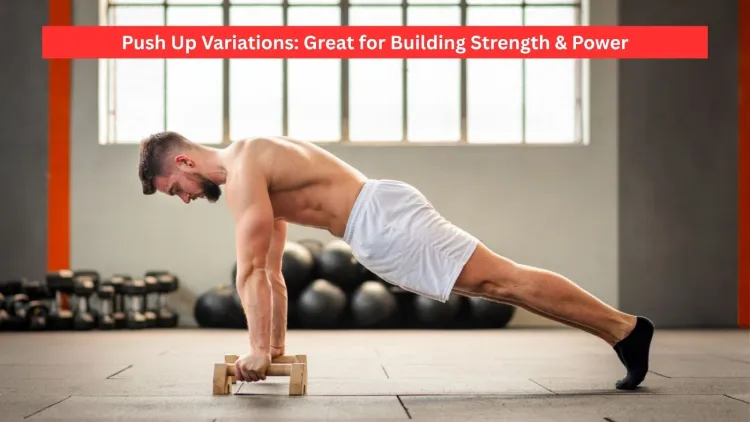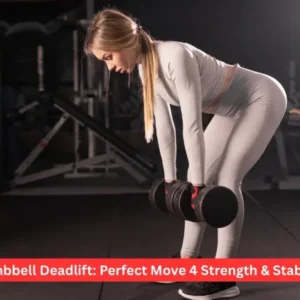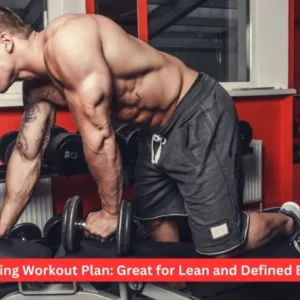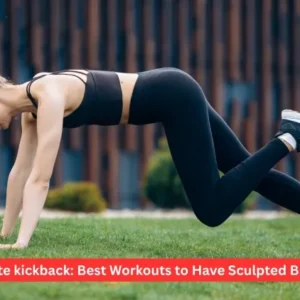The push up variations are a powerful and rigorous method of strengthening, developing muscle tone, stamina and stability at the core, without equipment. Starting with the push-ups that can be done with a few inclined planes and then hosting the more advanced one-arm and plyometric ones, this guide will tell you how to work on various groups of muscles, enhance your performance, and make your exercises interesting. No matter what you are looking to get out of exercising, be it aesthetics, strength, or endurance, incorporating some variation of the push-up in your workout can have you getting the same outcome in a shorter time and with more balanced results.
Why Push Up Variations Are so Effective?
Push-ups are considered to be one of the most ancient fitness exercises. Nevertheless, most individuals remain on the simple one without knowledge of the possibilities of push up variations. Such differences can radically alter the way your body is stretched, and your training will become more wholesome and active.
All types of push-ups apply a different position of hands, pace, or angle of the body, engaging different muscle fibres and increasing the exercise. Chest, shoulders, triceps, core, and stabiliser muscles are used to work together in order to maintain shape and strength with every repetitive movement.
The reasons why push up variations are so effective and helpful in general fitness are as follows:
- Make use of several muscles: They are used on the chest, triceps, deltoids, and abs, and even glutes and legs to stabilise.
- Improve the core strength: The right form in all variations develops a firm and stable core.
- Enhance stamina: Bodyweight exercises, as they are, enhance stamina and muscular endurance.
- Equipment not needed: They can be done at home, outside or in the gym.
- Adjustable intensity: You can have any level of fitness by setting the level of difficulty to incline or decline.
- Strength with functional benefits: Push-ups help enhance daily strength, and sit-ups which sustain an innate movement pattern.
This combination of variations of the push-up in your exercise plan will conveniently result in a complete and rounded exercise program that ensures your body is strong, slim, and injury-free.
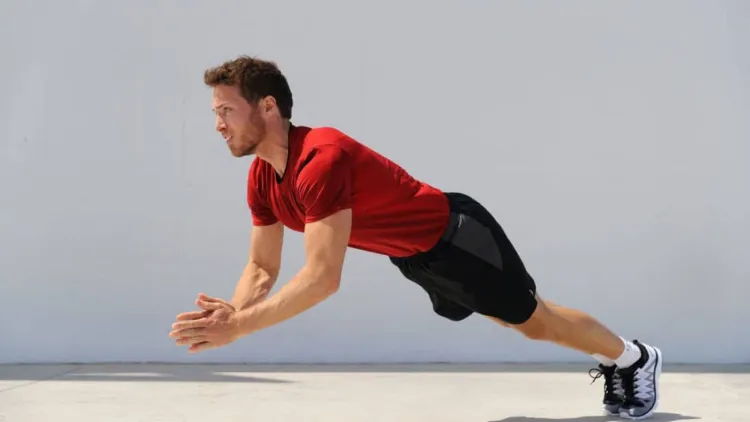
Best Push Up Alternatives to Include in Your Workout
Push-ups do not have a one-size-fits-all solution. These push up variations can be useful to any beginner who is just starting and an advanced athlete to develop power, endurance and muscle tone.
1. Standard Push-Up
All variations of the push-up have their foundation in this. It works on the triceps, shoulders, core, and chest.
How to do it:
- Start in the position of a plank with hands slightly more than the shoulders.
- Keep your belly button tight and your back straight.
- Bend down till the chest nearly reaches the ground.
- Press using your palms to get back to the initial position.
- Hint: To save your shoulders, make sure that your elbows are at approximately 45 degrees to your torso.
Advantages: Strengthens the entire body and the core, enhances standing and balance.
2. Wide-Grip Push-Up
This type of push-up targets your chest and outer pectoral muscles more.
How to do it:
- Keep your hands at an approximate shoulder distance.
- Keep your body upright and in the process, bend down chest towards the ground.
- Push up, with emphasis on the squeeze of the chest muscles.
Advantages: Strengthens the chest and improves the width of the structure in the least time possible and with minimum tricep engagement.
3. Diamond Push-Up
This version is also referred to as the triangle push-up, and it is the best one to use in working your triceps and inner chest.
How to do it:
- Create a diamond shape with your thumbs and index fingers below your chest.
- Bend over, making sure that your elbows are near your sides.
- Half push back till you have stretched your arms.
Advantages: This helps to tighten your triceps and core as well as give definition to your arms and chest.
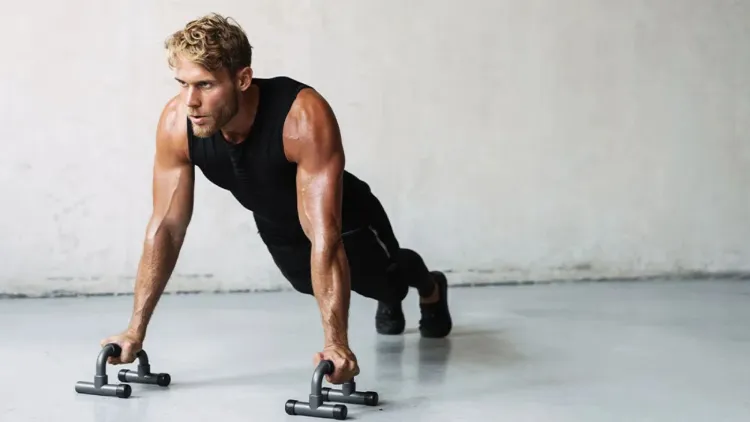
4. Incline Push-Up
This is among the simplest types of push up and it is ideal for beginners.
How to do it:
- Your hands should be positioned on a high surface, like a bench or a sturdy chair.
- Keep a the head and feet straight.
- Slide your chest on the surface in a downwards and upwards direction.
Pros: It lessens the resistance of your body, and you are able to master the proper form and control.
5. Decline Push-Up
An enhanced one that extends to the upper chest and shoulders.
How to do it:
- Keep your feet on the bench or step and put your hands on the ground.
- Keep your back straight and pull your stomach in.
- Bend your body such that your chest almost touches the floor.
- Half press all the way back to the starting position.
Benefits: Strengthens the upper chest and front shoulders, and further works the core.
6. Plank Push-Up (Plyometric Push-Up)
This type of explosive push-up develops speed and strength.
How to do it:
- Do a usual push-up, but push off rather than bulky enough to raise your hands are raisep.
- Clap halfway and fall gently, prepared for the next rep.
Advantages: Grows rapid-twitch muscle fibres, upper body strength and athletic capability.
7. Archer Push-Up
This is a developed motion that separates one side of the body and the other, enhancing power and manipulation.
How to do it:
- Begin with the broad positioning of hands.
- Bend your body towards one arm, holding the other arm straight.
- Push back up and switch sides.
Pros: Makes you fit to do one-arm push-ups and makes you more unilaterally balanced.
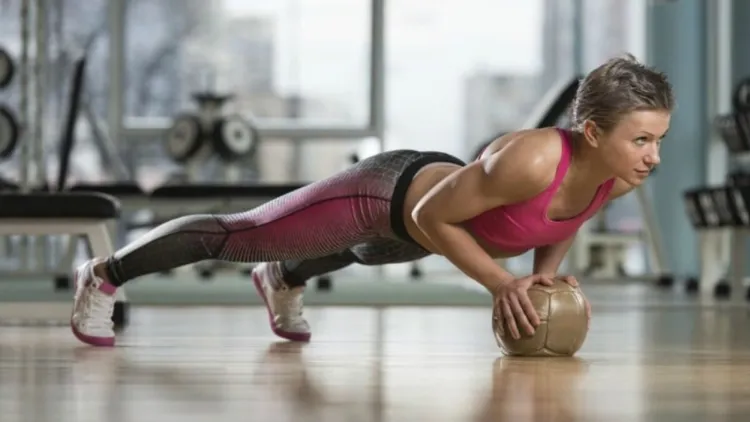
8. One-Arm Push-Up
This is one of the most challenging types of push-ups, to which strength, balance, and core control are put to the test.
How to do it:
- Grasp one hand under your breast, and the other hand behind your back.
- Slowly bend down, keeping your trunk straight.
- Raise yourself with your one arm.
Advantages: Maximum strength, coordination and muscle symmetry are developed.
9. Spiderman Push-Up
This variant of push-up is a creative form of push-up that works your core and enhances mobility.
How to do it:
- When you get down, bend over, and reach one knee to the same elbow.
- Push back up and change sides.
Advantage: The oblique, hips, and stabilising muscles are strengthened to give a full body effect.
10. Staggered Hands Push-Up
You cause an uneven load of work by changing the position of your hands, and thus you are exercising your muscles differently.
How to do it:
- Bring one of the hands a little forward and the other a little back.
- Bend the chest down and push up.
- Alternate the position of your switch hands halfway through your set.
Benefits: Corrects the strength imbalances and enhances stability.
11. T Push-Up
This dynamic version is a combination of push-up and side plank to get full-body work.
How to do it:
- Perform a regular push-up.
- Turn your torso on its side and stretch your arm upwards.
- Alternate the same, back to the beginning.
Advantages: Develops good shoulders, core and obliques as well as enhancing coordination and balance.
12. Pseudo Planche Push-Up
A difficult variant of the push-up which builds higher upper-body coordination.
How to do it:
- Rotate your hands and lean forward in a manner such that your shoulders push ahead of the wrists.
- Bend the chest down and then straighten up, keeping the lean.
Advantages: Excellent workout to strengthen shoulders, triceps and core to progress in gymnastics.
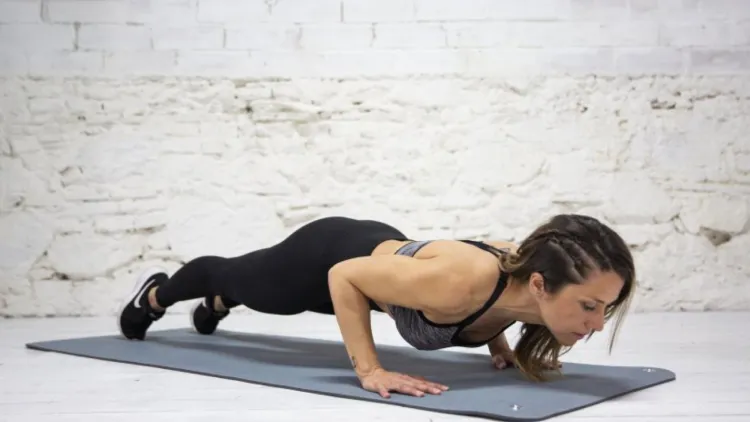
How to Master Push Up Variations
- Pay attention to the form rather than reps: Scullin on having a straight spine and tight core.
- Activate your core: Do not let the hips fall in by using abdominal muscles.
- Full range of motion: Bend as low as possible, almost lying flat on your chest, to get the maximum out of it.
- Manage your speed: Low, slow motions strengthen and increase the control of the muscles.
- Make small steps: Be able to master the fundamentals before advancing to more complex forms of push-ups.
- Warm up appropriately: exercises on the shoulders and wrist mobility facilitate injury prevention.
Common Mistakes to Avoid
- Loss of hips: causes lower back strain – maintain body position.
- Elbows flaring out: This puts stress on your shoulders; always keep your elbows next to your torso.
- Unfinished reps: Makes them less effective; perform the entire move.
- Repetition: Take time at the best speed to maximise the use of the muscle.
The Way To Add Push Up Variations to Your Work
An intelligent workout program involves a combination of various types of push-ups to develop muscles equally.
Beginner Routine:
- Incline Push-Up – 3 sets of 10 reps
- Standard Push-Up – 3 sets of 8 reps
- Knee Push-Up – 2 sets of 10 reps
Intermediate Routine:
- Standard Push-Up – 3 sets of 12 reps
- Diamond Push-Up – 3 sets of 10 reps
- Decline Push-Up – 3 sets of 8 reps
Advanced Routine:
- Archer Push-Up –3 sets of 8 on each side.
- Clap Push-Up – 3 sets of 10
- One-Arm Push-Up: 3 sets of 5 each arm.
Push up variations by mixing and matching depending on your fitness level, and are best done 2 -3 times a week to get some considerable gain in strength and endurance.
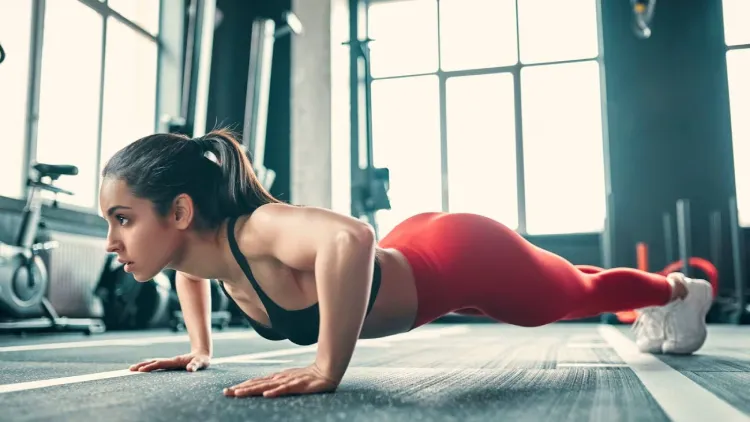
Final Thoughts
Push up variations are not an exercise; they are a whole philosophy of developing upper body and core strength naturally. In consistency and proper form, you can mould your chest, arms, shoulders, and core with no equipment.
Diversifying the push-up variations will push the body to new limits, enhance body movement functionality and avoid boredom at the workplace. Whatever your intake is, be it to gain strength, slim down, or become more athletic, all these variations guarantee long-lasting gains and outcomes that are truly impressive.
Frequently Asked Questions
1. Which are the most recommended variations of push-ups among new people?
Some of the exercises that beginners can practice are push up variations, such as knee, incline, and standard push-ups, in order to strengthen and gain the correct form.
2. What is the frequency of push up variations?
Push-ups 2-3 times per week because it is a consistent way to build strength and muscle mass. Concentrate on shape and slower development.
3. Will muscle be created with push-ups without weights?
Yes, push-up variations are beneficial because they help build core, arms, shoulders and chest as it is natural to build muscle and endurance.
4. What are the push-up variants for advanced athletes?
The more developed athletes may attempt clap push-ups, one-arm push-ups, or archer push-ups to increase power and balance.

